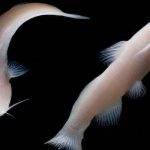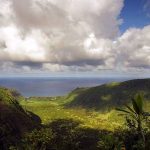Widespread illegal trade of hazardous chemicals
Researchers have studied the global trade in highly hazardous chemicals subject to a global treaty -- the Rotterdam Convention. The results are sobering: Nearly...
Online searches point to growing prevalence of nature-related phobias in urban populations
According to a new study, internet searches indicate a growing prevalence of various biophobias across the world. Countries with larger urban populations show interest...
Can using biodegradable fishing gear help reduce the cost of ghost fishing?
New research has found that the design of biodegradable fishing gear needs to improve if it is to help address the environmental and economic...
Marine fossils are a reliable benchmark for degrading and collapsing ecosystems
Humans began altering environments long before records were kept of the things that lived in them, making it difficult for scientists to determine what...
Carbon taxes that focus on luxury consumption are fairer than those that tax all...
Not all carbon emissions are made for the same reason -- they range from more essential purposes like heating a home to nonessential 'luxury'...
Thermal cloak passively keeps electric vehicles cool in the summer and warm in the...
When an electric vehicle is parked outside, its temperature can swing wildly from day to night and season to season, which can lead to...
The ground is deforming, and buildings aren’t ready
A new study has linked underground climate change to the shifting ground beneath urban areas. The phenomenon is affecting all major urban areas around...
Newly identified protein regulates the creation of cellulose in plant cells
A team has identified a protein that modifies the cellular machinery responsible for producing cellulose, which could inform the design of more stable, cellulose-enriched...
Evolutionary origins of the pygmy right whale
Researchers have finally settled a decades-long dispute about the evolutionary origins of the pygmy right whale.
Next-generation flow battery design sets records
A new flow battery design achieves long life and capacity for grid energy storage from renewable fuels.






















